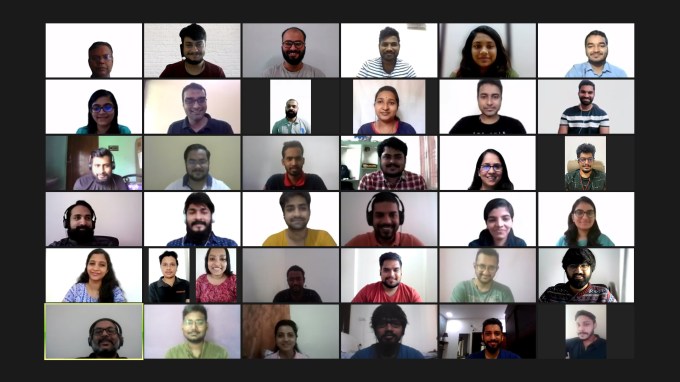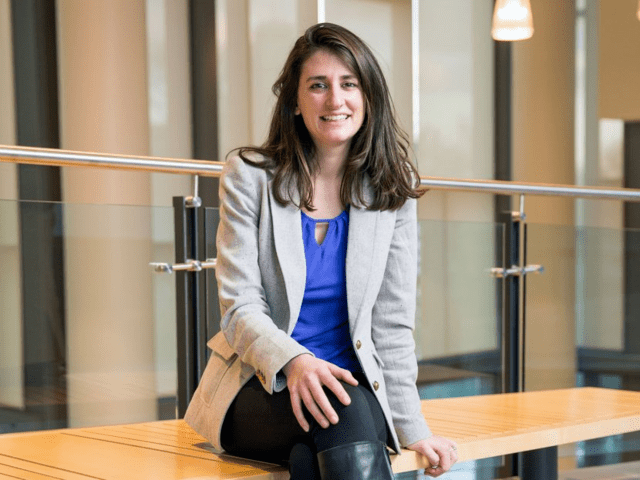News: The Loot project flips the script on NFTs
Editor’s note: Kyle Russell is the founder of Playbyte, a startup building an app that lets people make games on their phones. Last Friday, Dom Hofmann tweeted the launch of Loot, one of his new projects looking at games and game creation through the lens of NFTs: LOOT – randomized adventurer gear– no images or stats.
Editor’s note: Kyle Russell is the founder of Playbyte, a startup building an app that lets people make games on their phones.
Last Friday, Dom Hofmann tweeted the launch of Loot, one of his new projects looking at games and game creation through the lens of NFTs:
LOOT
– randomized adventurer gear
– no images or stats. intentionally omitted for others to interpret
– no fee, just gas
– 8000 bags totalopensea: https://t.co/qSnRJ1FD0n
etherscan: https://t.co/bF9p0RSHX2available via contract only. not audited. mint at your own risk pic.twitter.com/uLukzFayUK
— dom (@dhof) August 27, 2021
If “NFTs,” “gas” and “minting” sound unintelligible, the short version is that this project lets you spend some money to create a unique list of items that you could keep in the same wallet (an app like Rainbow) where you’d keep cryptocurrencies or other digital collectibles, typically art (or, as skeptics gleefully note, JPEGs).
I repeat: a unique list of items. No artwork, stats to compare quality or even game rules that could inform such stats.
People spent money to get those unique lists. Thousands. And as happens in NFTs, a market quickly formed around these unique lists of items. The “floor,” or minimum price to buy into a Loot “bag,” shot to thousands of dollars worth of Ethereum. Certain kinds of items in these lists sounded cool and were found to be rare upon analysis of the entire set, and so bags containing them rose in value to extreme heights:
“why 300 ETH?” https://t.co/BgxETzOv9I
— Dame.eth
(@jacksondame) August 31, 2021
And people began to fill in those missing elements like art — not fundamentally changing the underlying lists, but creating new works that explicitly reference the items in particular lists:
sorry can’t stop thinking about Loot – this is a real quick take on @hype_eth ‘s #1 rarity bag in a Derbler style stash pic.twitter.com/G6IvnQYfU7
— gremplin (@supergremplin) August 30, 2021
And like the lists themselves, people began taking an algorithmic approach to generating that art:
Creating AI-generated pixel art for @lootproject.
Made using @dribnet‘s Colab (CLIPIT/PixelDraw).
– Demon Crown
– Maelstrom Tear Amulet of Brilliance
– Holy Chestplate
– Ornate Belt pic.twitter.com/GGr0N7eMQg— MOΞ (@moesalih_) September 1, 2021
By August 31st, there was a legible community of people…
- investing in bags containing certain kinds of items;
- creating tools for visualizing Loot items and monitoring price fluctuations in this niche market;
- working on new derivative projects, like creating Realms for a theoretical adventurer with the gear in a Loot bag to explore:
Day 5 pic.twitter.com/dcu3fE90GS
— Loot (@lootproject) August 31, 2021
Except, there’s still no game rules for these items — including what it would even mean to have a character equipping them!
Hey, what’s that?  Oh right, people could make or generate stats too!
Oh right, people could make or generate stats too!
new header @lootproject pic.twitter.com/7QGEFhY4Y0
— Jordan
(@JordanLzG) September 1, 2021
This tweet really nails the overall phenomenon:
Loot is NFT improv.
It is an invitation to respond with, “Yes, and…”
— Redefined Life Podcast (RedefinedLife.eth) (@redefined_life) September 1, 2021
In less than a week, a community has gone from lists of text to infinitely many illustrations of those items to worlds for those items to reside in and characters to wield them. All from taking simple primitives and generating context around them that gives them value.
It’s pretty magical stuff. But even if there’s some speculative angle to the creation happening, how many people get to participate if these bags cost tens of thousands of dollars at a minimum? On the one hand: If you just think the game of making up a game is fun, because all of these bags and items live on the Ethereum network, then you can still make things that incorporate them at no cost (short of the painful fees currently associated with using Ethereum).
And if it really matters to you to have those unique objects in a wallet of your own so you can really participate, people are thinking of interesting paths there, as well:
Synthetic Loot
– returns a “virtual nft” of loot based on a given wallet
– b/c the wallet is the seed, only one bag per wallet
– because it’s not a “real” nft, no minting, transferring, selling, etcanyone with an ethereum wallet has synthetic loothttps://t.co/K2fx9Zw7qQ
— dom (@dhof) September 1, 2021
We need an ordained “basic” loot bag with free minting and unlimited supply so anyone can participate. https://t.co/aok9EqhlZX
— John Palmer
(@john_c_palmer) September 1, 2021
If that’s all too jargon-y, I’ll again summarize: There are feasible paths to making it free to “have” these items for the purpose of playing with the growing set of inter-compatible apps or games that might incorporate Loot — you just won’t have a Legit Bag with rare items that could sell for lots of money.
Oh, and what if you like some of the items in a Loot bag, but wish your adventurer could mix-and-match with other items from the broader set that just dropped?
Introducing Lootmart
a collab with @rvorias & @lootproject
1. Connect wallet
2. Unbundle your Loot Bag into individual ERC 1155 Loot items
3. Trade your Loot items to upgrade your adventurer
4. Dominate the metaverse pic.twitter.com/d4WiHEWtKo— Jon Yan (@jonjyan) September 1, 2021
Less than a week and already getting disrupted by unbundling!
I’m sorry, why is this interesting?
The Marvel Cinematic Universe started with Marvel Comics taking out a billion-dollar loan to finance the first four movies based on its iconic superhero characters. The seeds of awareness of these characters had been planted in the minds of the masses through decades of appearances in comics and TV leading up to their first appearances in blockbuster films. Decades of perhaps hundreds of writers and artists were getting paid to create fantastical stories for those characters that people would want to read and that would get them hooked to come back for the next issue. People came to closely associate themselves with characters with kind of funny origins (bit by a radioactive spider!).
This all happened in a top-down, corporate, mass-production context. A few creatives at Marvel did high-leverage work on a freelance or in-house basis, printers made a ton of copies and a supply chain got those issues to comics shops and dime stores across the country. Like dominoes, Stan Lee thinks of some new superhero (pitch: this guy’s not a hippy, he’s a weapons manufacturer industrialist!) to five decades later, Avengers: Endgame and Black Panther warp the definition of blockbuster forever.
But what if someone wanted to create an MCU competitor as a community, instead of going head-to-head with Disney?
Extrapolating from the last week of Loot…

You’d release a contract to generate sets of superhero names and associated powers. People would mint those heroes and they would begin to trade on the open market. People would build tools that determine which powers are more rare, especially around ones that sound cool (“flight” is a gimme).
They’d imagine their hero, illustrate them themselves and commission artists who could make them look cool. Eventually more technical folks in the community would do the heavy lifting to piece together tools that could generate art for characters in a common style, or be customizable by some key parameters.
Eventually, people would commission crossover art, and then you’re only a step away from shared storylines (increase the value of multiple characters with a single commissioned piece!).
DAOs, or decentralized groups who come together to create new projects in the crypto space or even “just” invest together, might buy up more popular characters and commission more elaborate visual stories with the aim of boosting the value of that underlying item containing a hero name + powers and any popular artworks that they inspired.
And assuming the project’s originators went with the direction of the Loot zeitgeist, all of this would be IP that could be re-used and remixed by anyone. That might sound crazy — isn’t the point to own it, and the point of owning it is to control how it’s used?
That’s the Disney status quo. In a world of projects like Loot, you want to reinforce the value of the NFT you own — and that value reflects that NFT’s renown and reputation. Echoing the phrase “all press is good press”: Any remix is a good remix. To be referenced is to still be culturally relevant. So if you own an NFT describing Arachnid Person, you want to contribute to an environment where as many people want to include Arachnid Person in their works as possible so that Arachnid Man No. 1 becomes something worth owning.
I’m really just expanding on Dylan Field:
Feels like two paths are emerging in NFT space.
(1) Build a universe but hold onto IP. Ex: @larvalabs deal with UTA (https://t.co/OxOq106hiK)
(2) Form a community to build a universe. Give all the IP away. See what happens. Ex: @lootproject
Personally like approach #2 better!
— Dylan Field (@zoink) August 31, 2021
And John Palmer rightly emphasizes something special: The lack of anybody who can say “no,” as people try to figure out how to make Loot cool:
Crucial decision *not* to have a company, or a team leading the way. Impossible to gate-keep any creative decisions.
— John Palmer
(@john_c_palmer) August 31, 2021







